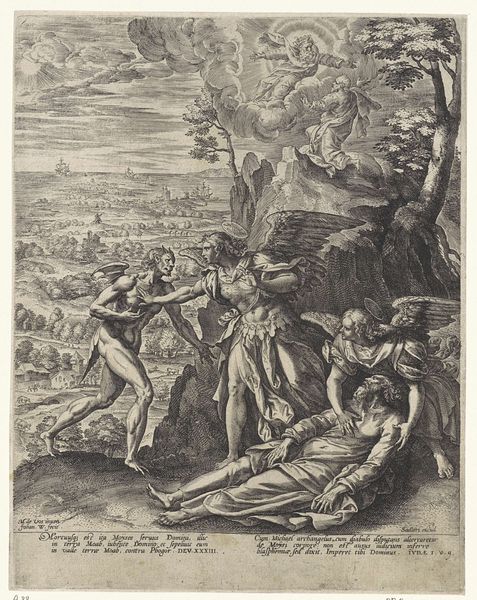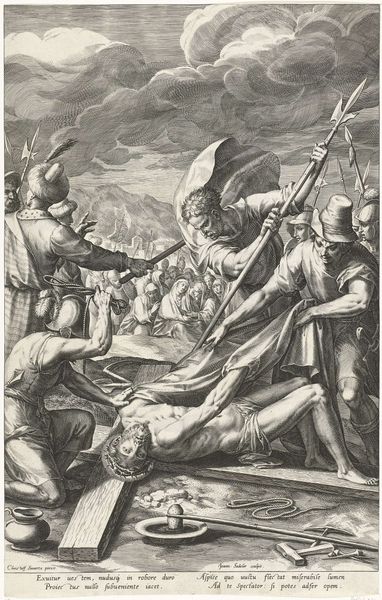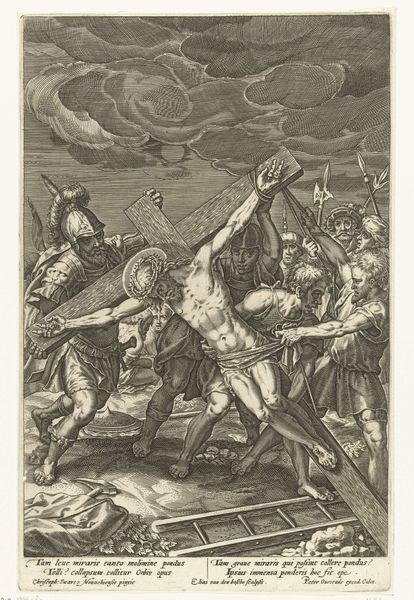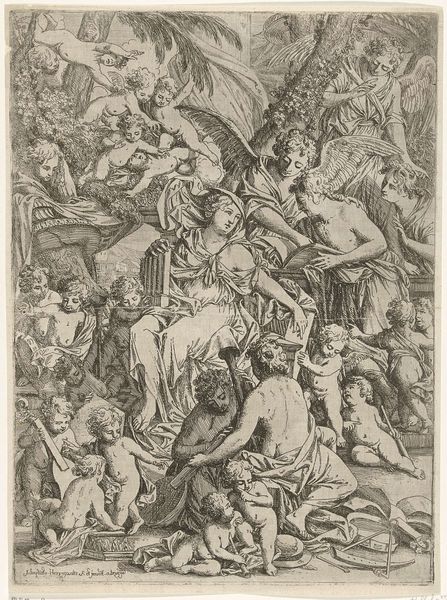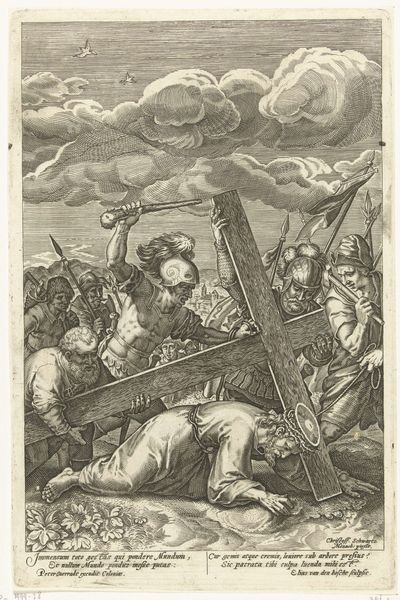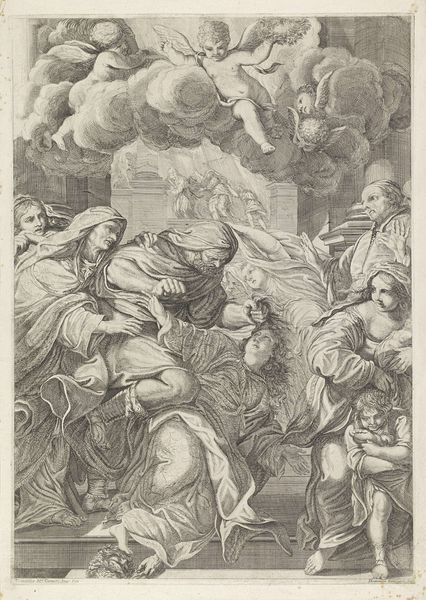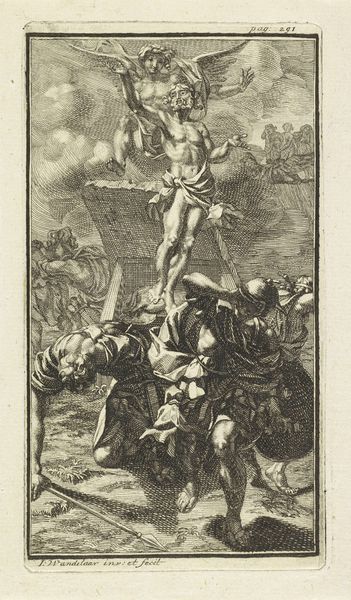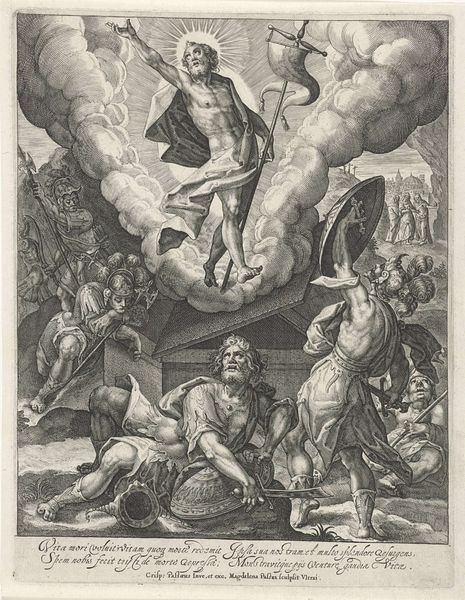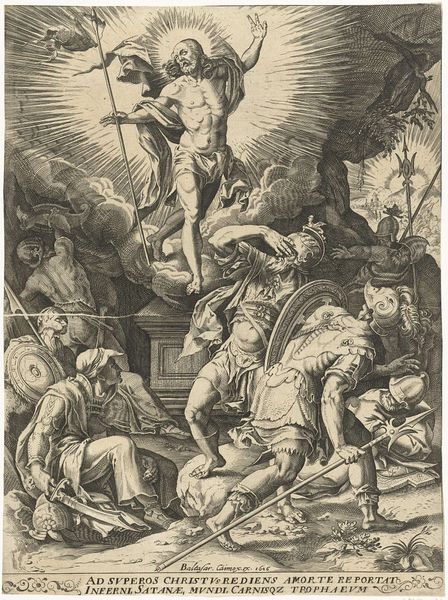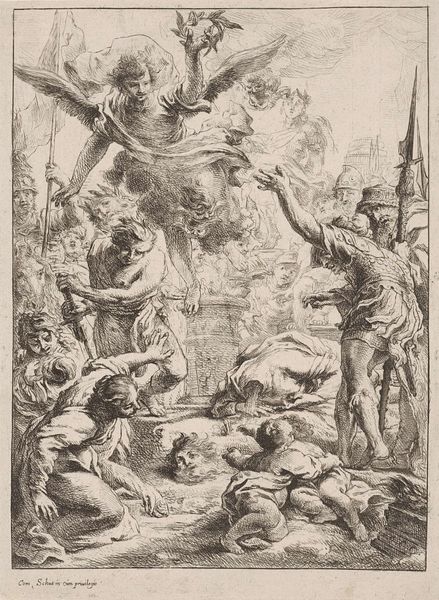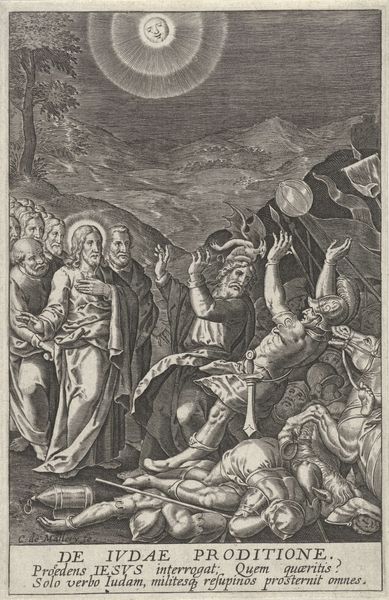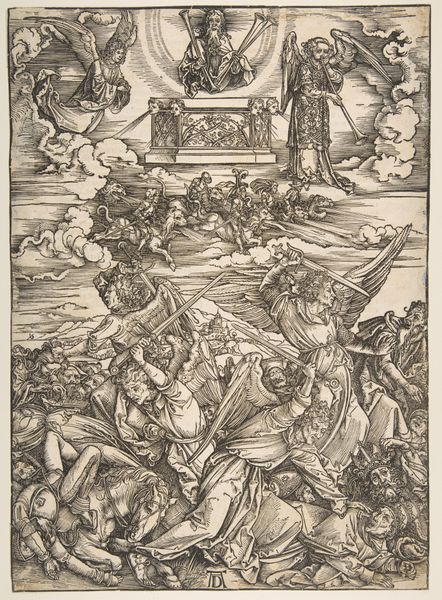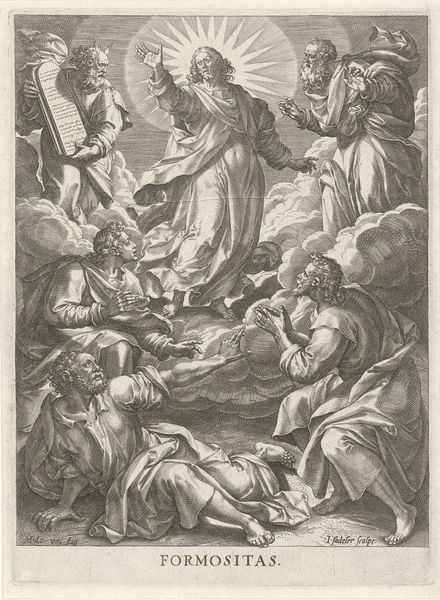
print, engraving
#
narrative-art
#
baroque
#
pen drawing
# print
#
pen illustration
#
pen sketch
#
landscape
#
figuration
#
line
#
history-painting
#
engraving
Dimensions: height 282 mm, width 184 mm
Copyright: Rijks Museum: Open Domain
Editor: This print, "Christus ontdaan van zijn kleding" – Christ Stripped of His Garments – was created sometime between 1600 and 1620 by Elias van den Bossche. It's currently held at the Rijksmuseum. The drama is intense! What first strikes me is how exposed Christ looks amidst all that aggression. What do you see in this piece? Curator: I am struck by the iconography, the brutal unveiling acted out here. Notice the contrast: Christ, limp and vulnerable, is surrounded by figures actively stripping him, jabbing at him with their spears and other implements. They become symbolic of the oppressive force denying not only his physical being, but his very identity. This resonates with age-old anxieties about power and the misuse of it, the fear of having one’s dignity taken. Editor: So the act of removing his clothes is more than just a practical step before crucifixion? Curator: Absolutely. Think of clothing as a symbol of status, identity, and protection. Stripping someone naked is a means of humiliation, a symbolic dismantling. It returns the individual to a state of defenselessness, both physically and psychologically. What feeling does the print’s chaotic composition convey? Editor: It feels unsettling, almost violent. The diagonal lines formed by the spears and Christ’s body create tension. Curator: Exactly. The visual chaos reinforces the psychological trauma inflicted upon Christ. This is a crucial component of religious symbolism: visual metaphors help make emotional, social, and political history understandable and memorable across diverse cultural and religious viewpoints. Editor: I hadn't thought about it in terms of its enduring cultural weight. I see the print in a different light now. Thanks! Curator: My pleasure. Looking closer at how an artist visualizes a particular scene and then examining its symbols lets us explore its enduring message across centuries.
Comments
No comments
Be the first to comment and join the conversation on the ultimate creative platform.
